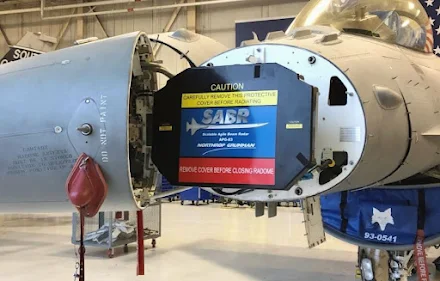Northrop Grumman is quite successful in marketing the AESA (Active Electronically Scanned Array) AN/APG-83 Scalable Agile Beam Radar (SABR) radar, because the radar has become a standard package in the production of the F-16 Viper fighter jet developed by Lockheed Martin.
However, recently there was a desire from Northrop Grumman to install the SABR radar in addition to fighter jets.
As quoted from Janes.com (10/6/2022), Mark Rossi, director of the Scalable Agile Beam Radar program at Northrop Grumman, said that the C-130 Hercules community was interested in SABR technology.
The Lockheed Martin C-130 Hercules is a turboprop transport aircraft and does not require some of the air-to-air radar capabilities that a fighter jet would use. Rossi said that the C-130 is only equipped with weather radar, and the SABR can provide air-to-ground capability and increase situational awareness to the C-130 crew.
“If you think about the C-130, it doesn't fly fast. So, the more they (the crew) know about what is in front of them, the further they can see, the better," said Rossi. Not long ago, Northrop Grumman released news that it had completed the installation of the AN/APG-83 radar on the USAF Air National Guard (ANG) F-16 Viper fighter jet fleet.
Lokheed Martin said the use of the AESA radar on the F-16 makes this fourth-generation fighter have capabilities that are embedded in fifth-generation fighter jets, such as the F-22 Raptor and F-35 Lightning II.
Each of these stealth fighter jets uses the AN/APG-77 (F-22) and AN/APG-81 (F-35). The adoption of the AESA radar type makes the air-to-air combat capabilities of the F-16 Viper better than the Sukhoi Su-35 which still uses the PESA (Passive Electronically Scanned Array) radar.
The AESA radar has many advantages over conventional mechanical systems. The radar beam can be directed more quickly and flexibly (agile beam steering) electronically. As a result, this radar can detect and track more targets.
In addition, this AESA radar also has LPI (Low Probability of Intercept) capability. LPI means radar emissions are more difficult for opponents to detect. Typhoon can use active radar to detect opponents with a small chance that the opponent will know if it is being detected.
In its specifications, the AN/APG-83 radar offers the pilot greater situational awareness, flexibility and targeting in various weather conditions. Speaking of detection capabilities, the AN/APG-83's detection range reaches 120 km, while identification can be done at a distance of 84 km.
Follow Daily Post on Google News to update information quickly. Thank you for visiting our website..!! Don't forget to share any information to help develop our website..



